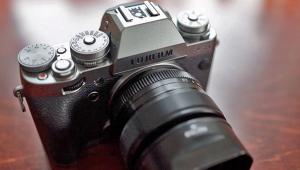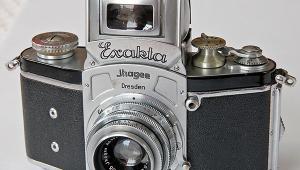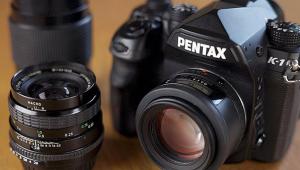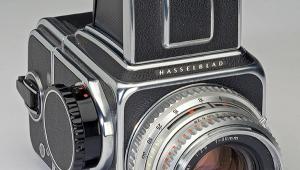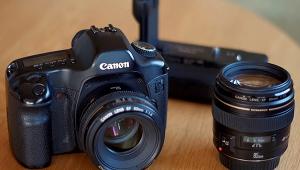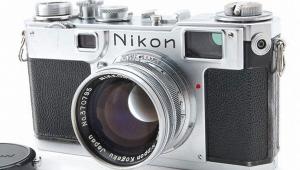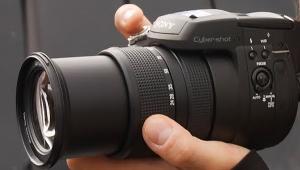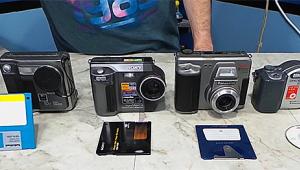Argus Cameras; The American Firm That Made Miniature Photography Affordable
This look at the history and a few of the better-known early products of Argus Cameras was gleaned primarily from the new book "Argomania: A Look At Argus Cameras And The Company That Made Them" by Henry J. Gambino. As Gambino says, "How many other companies have a museum devoted solely to its history and can also boast of a large, thriving, worldwide collectors group?"
 |
|
|
The firm that invented and produced Argus cameras in Ann Arbor, Michigan, started out as the International Radio Corporation (IRC) founded by Charles Albert Verschoor, a true American entrepreneurial genius. In 1932 IRC introduced the Kadette, a small four-tube AC/DC radio that measured 85/8x61/2x4" and weighed only 6 lbs, which made it easily portable from room to room. One of its most innovative features was its phenolic resin cabinet. The plastic cabinet and assembly lines would lend themselves to the manufacturing of miniature cameras a few years later. IRC soon marketed a kit that allowed Kadette owners to use the radio in their automobiles and other vehicles, which effectively started the car radio market.
Their radio business was successful, but very seasonal, resulting in slack months for IRC employees. So Verschoor worked on ideas to expand the product line to keep the employees busy all year. Although this was during the Great Depression, there was an expanding variety of film emulsions, though still very slow, and the flash bulb was invented in '27, permitting easier indoor photography.
Two Kodak innovations in the mid-30s helped spur interest in miniature films. Kodak introduced 35mm film in daylight-loading cartridges, which did away with the need for the photographer to load the cassettes themselves in a darkroom. Then, in '36, Kodak introduced Kodachrome slide film in 35mm format (with a slow daylight speed of Weston--later termed ASA--10), bringing a new market for inexpensive color photography. In '36, casual snapshooters had a variety of inexpensive fixed-focus cameras to choose from, but most used larger size roll film. Professionals and serious photographers who could afford them often chose the costly German Leica or Contax 35mm cameras. A bit less expensive was the Kodak Retina 35mm, which still cost $57.50, so most of the miniature film cameras then were out of the reach of many aspiring photographers. To put costs in context you have to realize a week's salary for the average worker was only $10 back then.
 |
|
|
Verschoor foresaw a huge potential for an inexpensive miniature camera, one that could be mass produced at low cost but of adequate quality to appeal to a broad audience having limited funds. In May '36, the Argus A, which sold for $12.50 (about 1/10 of the cost of a Leica back then), was introduced. Eventually there were seven variations of the A series, all essentially the same. There was a phenolic body, optical viewfinder, exposure counter mechanism, and retractable drop-in lens assembly. The 50mm lens was an f/4.5 anastigmat and there were four speeds on the shutter that was cocked by hand. There were two settable focus positions: retracted for storage and carrying, for subjects from 18 ft to infinity and close focusing for 6-18 ft. The phenolic resin body could be produced by the same machinery as the company radios and the assembly line could be kept busy the year round. Originally, IRC merely assembled the cameras using purchased lens/shutter assembly made by Ilex Optical Company of Rochester, New York. For the new business venture the company name became the International Research Corporation. IRC not only advertised in the photographic magazines of that era, but also ran ads in National Geographic and the brand-new Life magazine.
The outstanding success of the Argus A encouraged IRC to become a full-line producer of photographic products. The Argus Model A slide projector was the first of a long list of slide projectors. The projectors then were made by SVE Corporation and could accept both 35mm slides and filmstrips. Throughout the remainder of the '30s other cameras, slide projectors, accessories, and darkroom products were added to the line. In the words of a '39 Argus advertisement, "In the complete Argus line is everything you want for full enjoyment of miniature photography at lowest cost."
In the late '30s IRC had three big camera winners, the Argus A, the Argus C, and the Argus C-2, the forerunners of their most famous product, the boxy and nearly indestructible "Bricks." In '39 they unveiled the Argus C, which eventually would become the C-3, the most widely sold American-made 35mm rangefinder camera in history (a total of almost 3,000,000 were produced) and it remained their flagship product until '66. Initially it sold for $30 along with a proprietary flash gun, which plugged into two holes on the side of the body.
 |
|
|
In the late '30s IRC decided they should begin manufacturing their own lenses so they bought Graf Optical Company and their manufacturing machinery. During War World II camera production for civilian use was nil, but they had many military contracts for manufacturing both optics and electronics. Argus designed and manufactured precision optics, including tank periscopes, telescopes, binocular lenses, and prisms plus various optical fire control devices as well as electronic aircraft controls. They won the prestigious Army-Navy "E" award five times during this period.
The entire photographic industry was caught up in the post-War World II boom demand for civilian products. Even as late as '47 and '48 products were still scarce and allocated to dealers. Manufacturers soon had to include improvements in their prewar products. Internal flash synchronization (adopted by Argus in '39 with the C-3) was now included in most other brands of cameras. Lens coatings became commonplace for improved optics.
